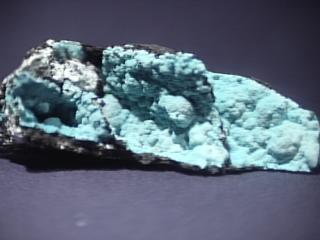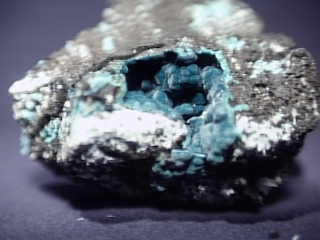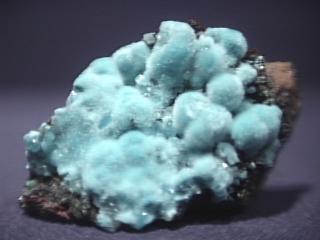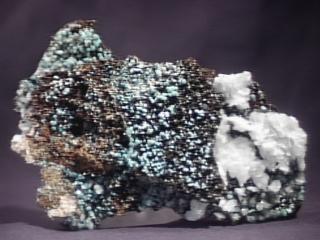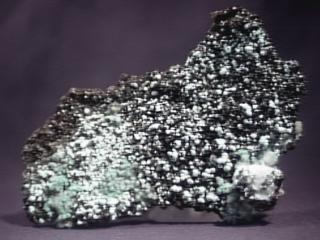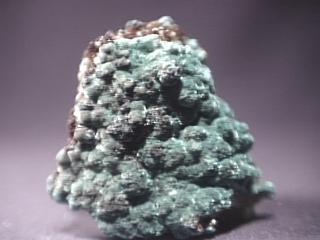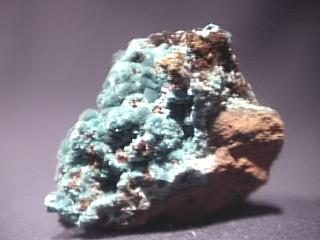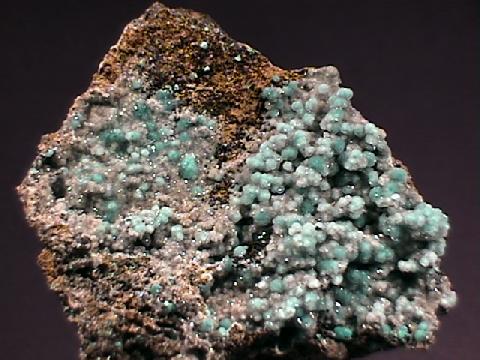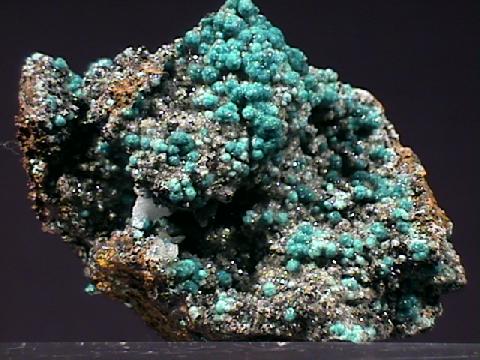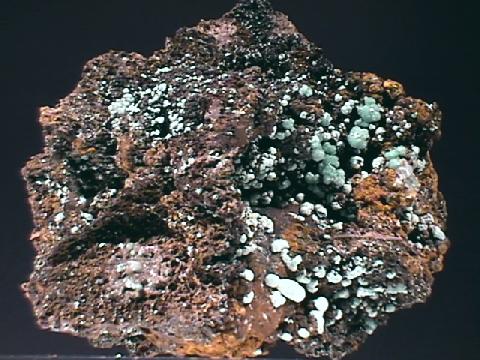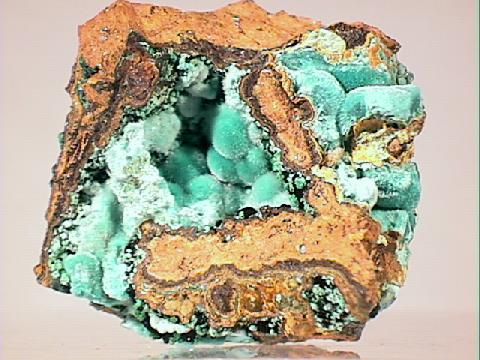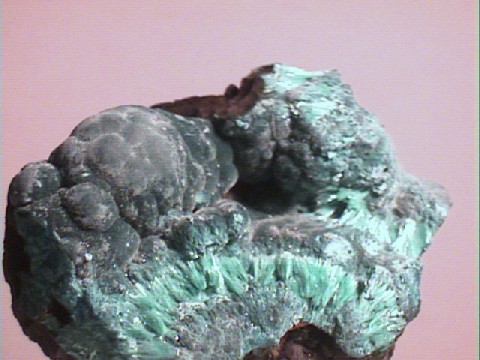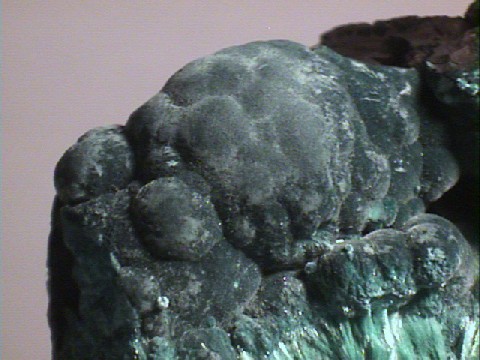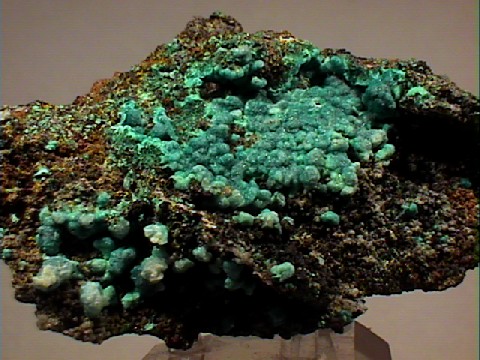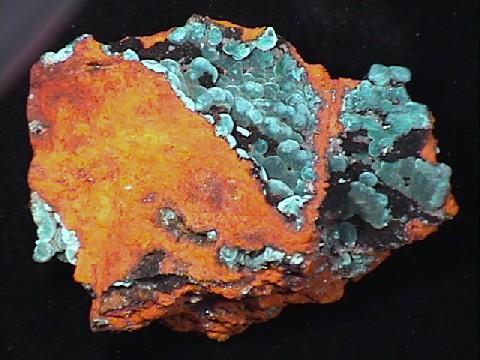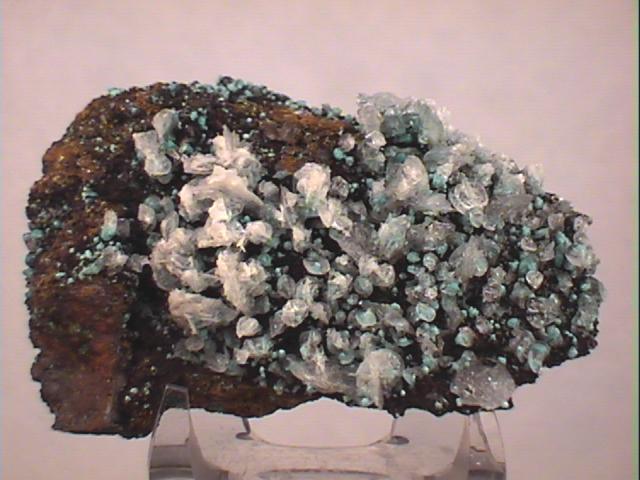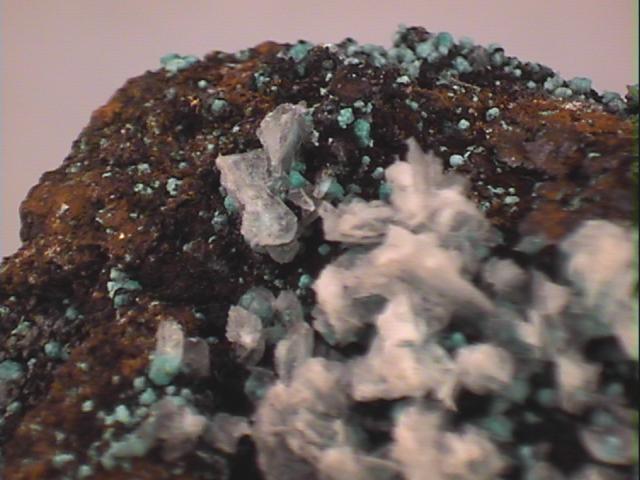 THE MINERAL ROSASITE
THE MINERAL ROSASITE
- Chemistry: (Cu, Zn)2CO3(OH)2 , Copper Zinc Carbonate Hydroxide
- Class: Carbonates
- Group: Rosasite
- Uses: very minor ore of zinc and copper and as a mineral specimen
Specimens
Rosasite can be confused with Aurichalcite, (Zn, Cu)5 (CO 3 )2(OH)6 . However rosasite is usually more massive but not lamellar. Rosasite crystals are harder than aurichalcite; 4 versus 1 - 2 respectively.
PHYSICAL CHARACTERISTICS:
- Color is usually a bluish-green to green.
- Luster is silky to vitreous to dull for massive specimens.
- Transparency: Crystals are transparent to translucent.
- Crystal System is monoclinic; 2/m
- Crystal Habits include radiating tufts of fibrous crystals. It typically is found as crusts and botryoidal masses or nodules.
- Hardness is 4
- Specific Gravity is approximately 4 (somewhat heavy for non-metallic minerals)
- Cleavage is perfect in one direction but not usually noticed because of fibrous crystal habit.
- Fracture is fibrous.
- Streak is pale shades of bluish green or green.
- Associated Minerals include limonite, smithsonite, hemimorphite, malachite, aurichalcite and calcite.
- Other Characteristics: Effervesceses easily in cold dilute hydrochloric acid.
- Notable Occurrences include Arizona, New Mexico and Inyo Co., California, USA; Rosas Mine, Sardinia, Italy; Tsumeb, Namibia and Mapimi, Durango, Mexico.
- Best Field Indicators are crystal habits, color, associations, hardness and reaction to acid.

